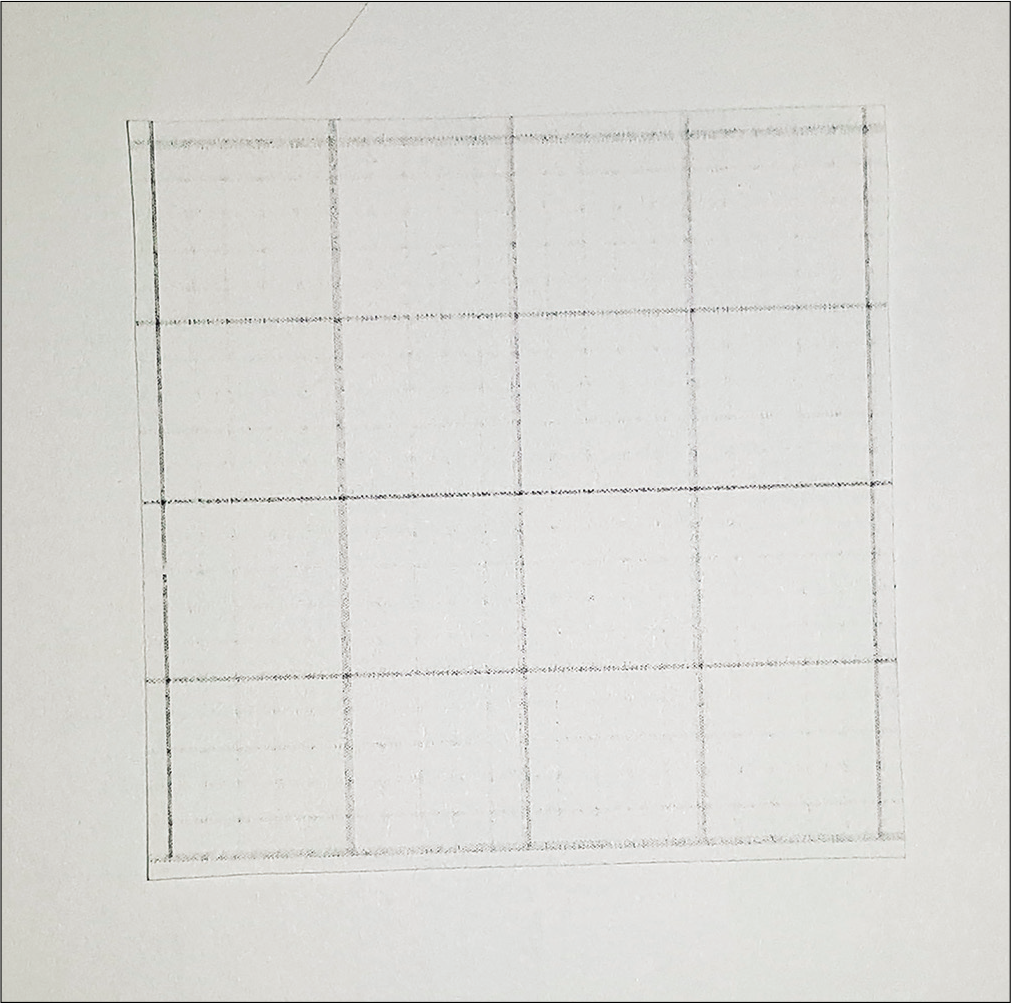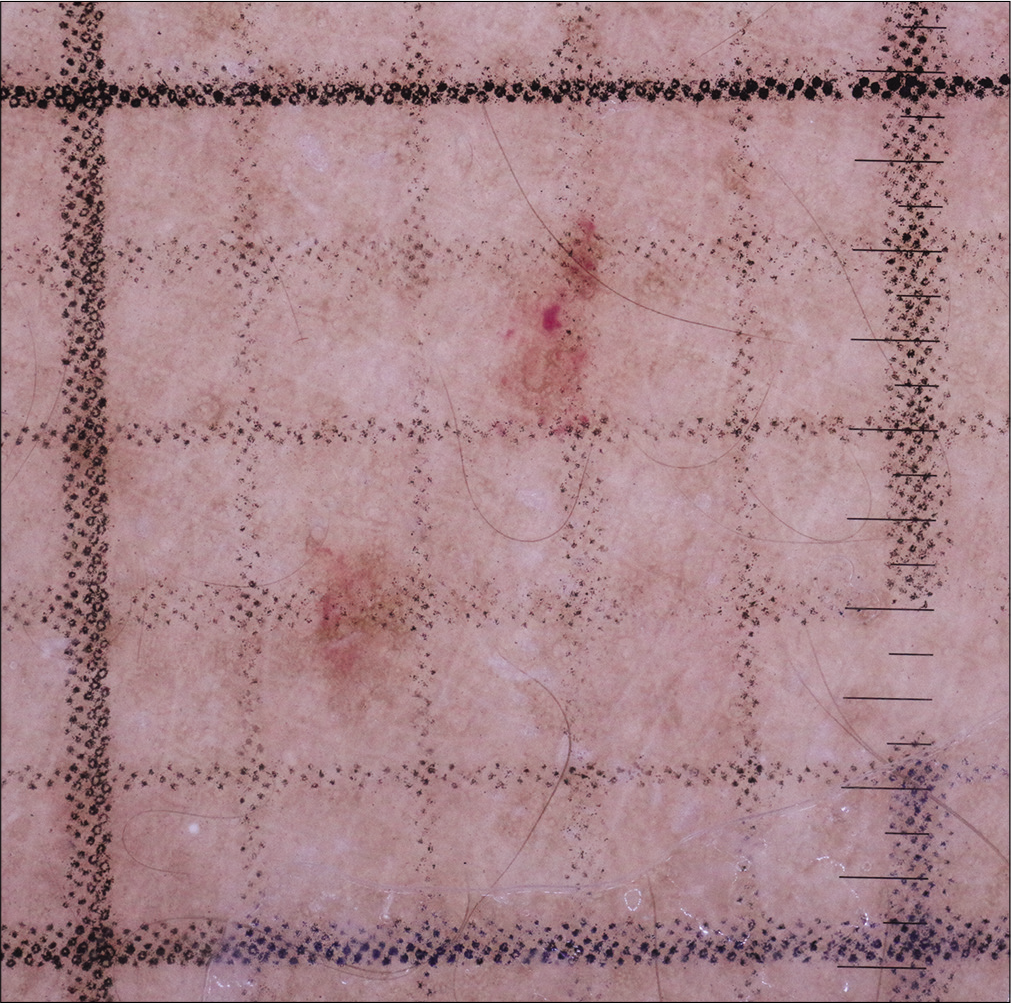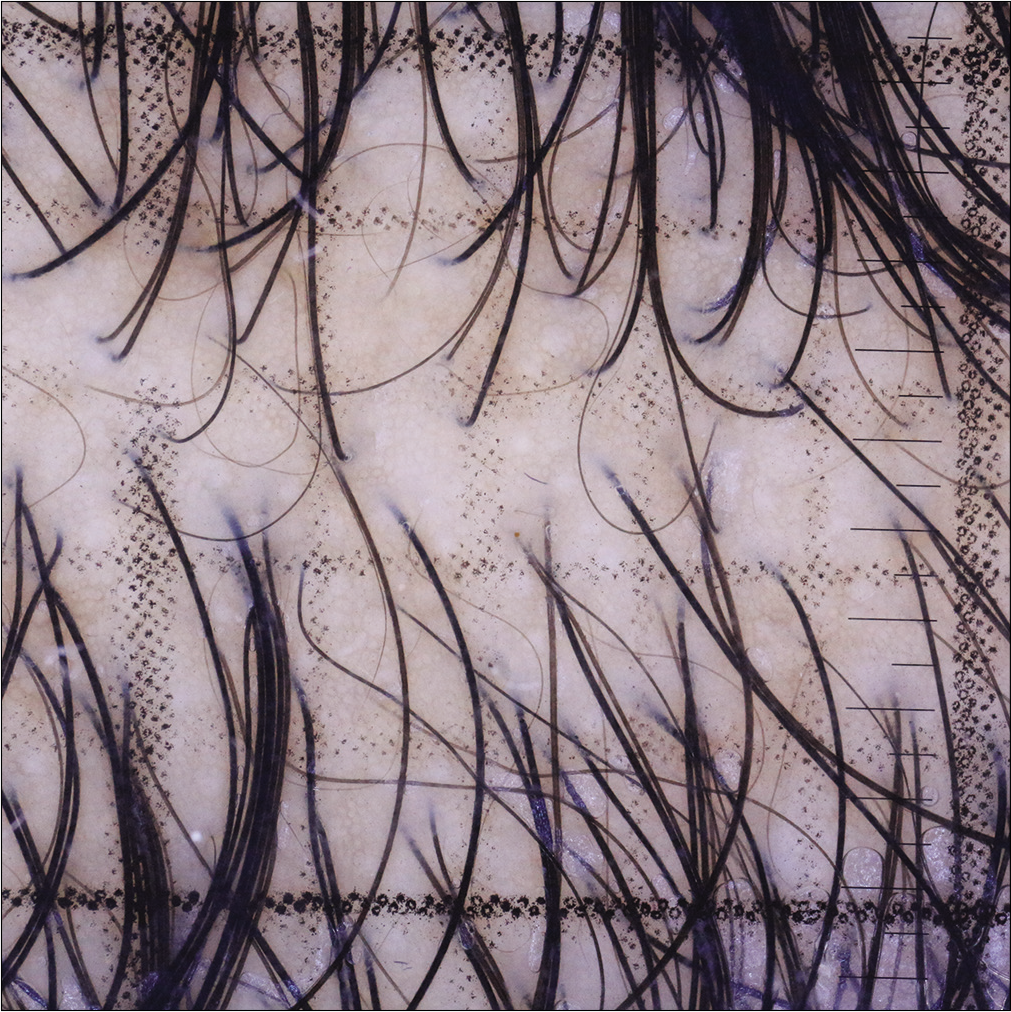Translate this page into:
Using a printed grid for easy dermoscopy measurements
Corresponding author: Dr. Feroze Kaliyadan, Department of Dermatology, King Faisal University,Hofuf, Al Ahsa, Saudi Arabia. ferozkal@hotmail.com
-
Received: ,
Accepted: ,
How to cite this article: Kaliyadan F, Jayasree P, Ashique KT. Using a printed grid for easy dermoscopy measurements. Indian J Dermatol Venereol Leprol 2022;88:268-9.
Problem
Handheld dermoscopy devices come with an in-built, linear measuring scale on the faceplate.1 While the scale gives a general perspective of lesion size, it is difficult to accurately measure the area of the lesion or do counts like hair counts or counts for other patterns using this scale. We propose a simple method by which the accuracy of lesion size measurement and structure counts can be improved when using a handheld dermoscope.
Solution
We describe the use of a measurement grid printed on transparent plastic sheets, which can be placed over the faceplate of handheld dermoscopes. The grid we used was a 5 X 5 square pattern, with each small square having a size of 2 mm [Figure 1]. The standard-sized grid is easily available online as printable graph paper models. When using a home/desktop printer, it is also important to ensure that the transparency sheet is appropriate for the type of printer and as per the manufacturer’s instructions.

- Printed grid sample (4 cm × 4 cm, with each square cm in the form of a 5 × 5 square with a small square having a side of 2 mm)
For visualization, it is better to use contact fluid (in our case we used alcohol gel) to prevent reflections from the shiny surface of transparent sheet. We got the best results by placing fluid both above and below the sheet (even when using in polarized mode). The grid helps in a more accurate measurement of the lesion size [Figure 2a]. For example, in the given image, the cherry angioma on top would have an area of about 2 mm2 (height, approximately, is equal to the side of one small square, which is 2 mm, and width is approximately half of the side of one small square, which is about 1 mm, so total area 2×1 = 2 mm2). It is also handy in trichoscopy where the smaller squares can be used for hair counts [Figure 2b]. The number of hairs in general or a particular morphology in a few of the smaller squares could be counted and can be multiplied to get a rough idea per cm2. It would be especially useful in the quick measurement of anisotrichosis, where the smaller squares can be counted instead of the whole field. The grid would also help in improving the process of follow-up and assessment of treatment response. The grid can be reused after cleaning with an alcohol solution. We would suggest that dermoscope manufacturers could add an optional faceplate with an inbuilt grid as mentioned above.
Using this printed grid can help improve the accuracy of both lesion size measurement and structure counts when using handheld dermoscopes.

- Grid used for lesional area measurement (each small square in the grid has a side of 2 mm)

- Grid used for trichoscopy
Financial support and sponsorship
Nil.
Conflicts of interest
There are no conflicts of interest.
References
- Using a printed plastic ruler for measurement when using polarized dermoscopy without the contact face plate. J Am Acad Dermatol 2019
- [Google Scholar]





